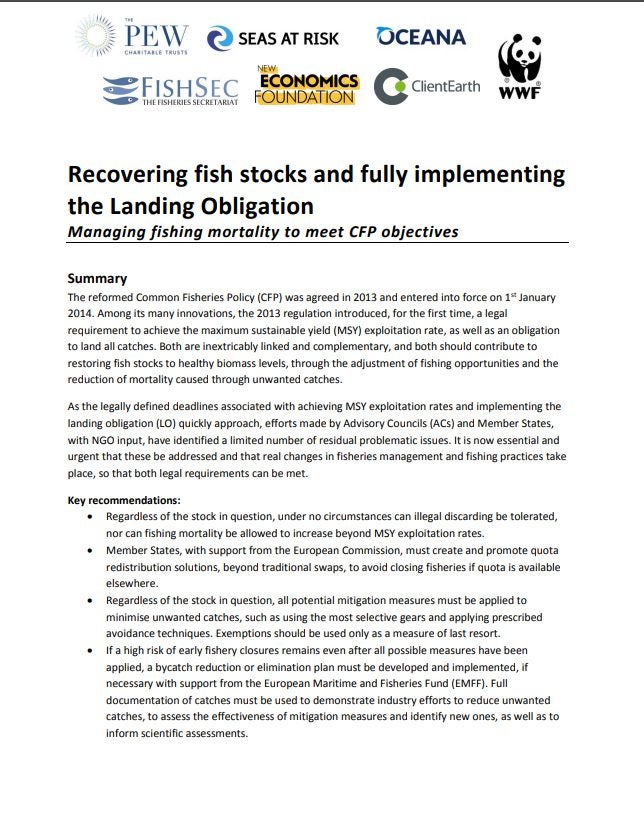Report | November 12, 2018
Recovering fish stocks and fully implementing the Landing Obligation
Summary
The reformed Common Fisheries Policy (CFP) was agreed in 2013 and entered into force on 1st January 2014. Among its many innovations, the 2013 regulation introduced, for the first time, a legal requirement to achieve the maximum sustainable yield (MSY) exploitation rate, as well as an obligation to land all catches. Both are inextricably linked and complementary, and both should contribute to restoring fish stocks to healthy biomass levels, through the adjustment of fishing opportunities and the reduction of mortality caused through unwanted catches. As the legally defined deadlines associated with achieving MSY exploitation rates and implementing the landing obligation (LO) quickly approach, efforts made by Advisory Councils (ACs) and Member States, with NGO input, have identified a limited number of residual problematic issues. It is now essential and urgent that these be addressed and that real changes in fisheries management and fishing practices take place, so that both legal requirements can be met.
Key recommendations:
- Regardless of the stock in question, under no circumstances can illegal discarding be tolerated, nor can fishing mortality be allowed to increase beyond MSY exploitation rates.
- Member States, with support from the European Commission, must create and promote quota redistribution solutions, beyond traditional swaps, to avoid closing fisheries if quota is available elsewhere.
- Regardless of the stock in question, all potential mitigation measures must be applied to minimise unwanted catches, such as using the most selective gears and applying prescribed avoidance techniques. Exemptions should be used only as a measure of last resort.
- If a high risk of early fishery closures remains even after all possible measures have been applied, a bycatch reduction or elimination plan must be developed and implemented, if necessary with support from the European Maritime and Fisheries Fund (EMFF). Full documentation of catches must be used to demonstrate industry efforts to reduce unwanted catches, to assess the effectiveness of mitigation measures and identify new ones, as well as to inform scientific assessments.


